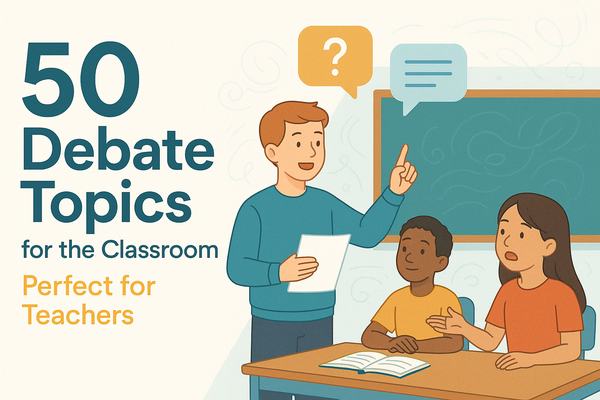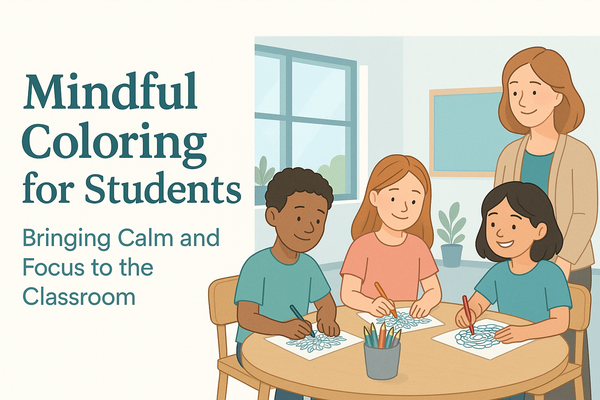Step-by-Step Guide to Teaching Alliteration Poems

Are you looking for exciting alliteration poems to bring into your classroom? Whether you are introducing young learners to poetry or guiding middle school students through the wonders of figurative language, alliteration is a fantastic tool to make learning fun and memorable.
By exploring real poems filled with playful repetition, students can sharpen their reading skills, strengthen their creativity, and gain confidence in writing their own poetry. In this guide, we will dive into engaging alliteration poem examples that will captivate your students. We will also share interactive activities to help them identify repeated consonant sounds and craft their own rhythmic, alliterative masterpieces.
What Are Alliteration Poems?
An alliteration poem is a type of poetry that uses the repetition of the same beginning sound in two or more words within a line or verse. This technique creates a rhythmic and often musical effect, making poems more fun and engaging to read.
For example, a sentence like “Silly Sally skipped swiftly down the street” uses alliteration because multiple words begin with the ‘S’ sound. Alliteration is a powerful literary device that helps enhance the flow of a poem and makes it more memorable. It is commonly found in poetry, tongue twisters, and even song lyrics.
Teaching alliteration not only improves students' understanding of sound patterns but also strengthens their vocabulary and creative writing skills. By introducing alliteration poems in your classroom, you are giving students a fun way to play with words while developing their speaking and listening skills.
Why Is Alliteration Used in Poems?
Alliteration plays a key role in poetry by capturing the reader’s attention and making verses more memorable. Just like a catchy slogan or a well-crafted headline, the repetition of consonant sounds creates rhythm and flow, making the words more enjoyable to read and hear. Teaching double consonant sounds can be an added factor in teaching alliteration easily.
This technique is especially popular in student’s poetry and nursery rhymes, as it adds a playful, musical quality that sparks imagination and keeps young readers engaged. Beyond its entertaining effect, alliteration also helps to emphasise certain words or ideas, making poems more impactful.
The repeated sounds can create mood, enhance meaning, and even make poems feel like tongue twisters - challenging but fun for students to read aloud. By introducing alliteration in your poetry lessons, you are not just teaching a literary device; you are helping students explore the beauty of language and develop their own creative writing skills.
Top 10 Alliteration Poems to Help Students Learn
Alliteration is a powerful literary device that enhances poetry by adding rhythm, flow, and memorability. It is widely used in nursery rhymes, tongue twisters, and creative writing to engage young learners and develop their phonetic awareness. Below are ten excellent examples of alliteration in poetry that can help students understand and appreciate this fun linguistic tool.
1. Peter Piper – Author Unknown
A classroom favorite, "Peter Piper," is one of the most famous tongue twisters, filled with the heavy repetition of the letter "p."
Poem Excerpt:
Peter Piper picked a peck of pickled peppers.
A peck of pickled peppers Peter Piper picked.
If Peter Piper picked a peck of pickled peppers,
How many pickled peppers did Peter Piper pick?
2. Betty Botter’s Butter – Mother Goose
This classic nursery rhyme is another excellent example of alliteration, focusing on the letter "b."
Poem Excerpt:
Betty Botter bought some butter,
But, she said, this butter’s bitter;
If I put it in my batter,
It will make my batter bitter.
3. Silly Sally – Audrey Wood
This is a fun and whimsical example of alliteration that challenges pronunciation.
Poem Excerpt:
Silly Sally swiftly shooed seven silly sheep.
The seven silly sheep Silly Sally shooed shilly-shallied south.
4. She Sells Seashells – Terry Sullivan
This famous tongue twister has been a classic for over a century.
Poem Excerpt:
She sells seashells by the seashore,
The shells she sells are seashells, I’m sure.
So if she sells seashells on the seashore,
Then I’m sure she sells seashore shells.
5. I Saw an Ol’ Gnome – Shel Silverstein
A quirky and humorous poem with a unique twist on alliteration.
Poem Excerpt:
I saw an ol’ gnome
Take a gknock at a gnat
Who was gnibbling the gnose of his gnu?
6. The Football Game – Alan Loren
A sports-themed poem that highlights multiple instances of alliteration with different letters in each line.
Poem Excerpt:
Blitz and blocking, bump-and-runDrive and drop kick, the other team’s doneEnd zone, end line, ebb and flowSnap, sack, scrambling, I love it so.
7. Eat Wisely – Alan Loren
This poem makes learning about food fun while incorporating alliteration.
Poem Excerpt:
Franks and fries, and French fondueBeans and burgers and biscuits tooChicken, chili, and cheddar cheeseWhen I munch too much, I always sneeze!
8. Spinning Dry – Denise Rodgers
A whimsical poem imagining what it would be like to bathe in a washing machine.
Poem Excerpt:
If I had a choice when it’s time to get cleanI’d like to jump into our washing machinefor sudsing and soaking and rolling and churningand bobbing and bubbling and twisting and turning.
9. Bear in There – Shel Silverstein
This humorous poem tells the story of a polar bear in a refrigerator.
Poem Excerpt:
There’s a polar bearIn our Frigidaire-He likes it ’cause it’s cold in there.With his seat in the meatAnd his face in the fishAnd his big hairy pawsIn the buttery dish.
10. Slithery, Slidery, Scaly Old Snake – Denise Rodgers
A poem filled with “s” sounds, describing a snake in a fun and slightly gross way.
Poem Excerpt:
Slithery, slidery, scaly old snake,surely your body must be a mistake.Your eyes, mouth and tongue wisely stay on your head.It seems that your body is all tail instead.
How to Write an Alliteration Poem – Step-by-Step Guide
Alliteration poems are fun, creative, and easy to write. They rely on repeating the same consonant sounds at the beginning of words to create rhythm and emphasis. Whether you are a student learning about poetry or a teacher guiding young writers, this step-by-step guide will help you craft an engaging alliteration poem.
Step 1: Choose a Topic
Start by selecting a subject for your poem. It can be anything you find interesting - animals, sports, food, or even a made-up character. The key is to pick a topic that allows you to play around with words and sounds.
Example Topics:
A sneaky snake slithering through the grass
A bouncy bunny baking banana bread
Step 2: Pick a Letter for Alliteration
Once you have a topic, choose a consonant sound that you want to repeat throughout your poem. This will be the main sound driving the rhythm of your lines.
For instance, if your topic is “A silly squirrel,” you might focus on the letter “S” to create lines like:
"Silly squirrels swiftly scamper, searching sweet snacks in shady spots."
Step 3: Brainstorm Words with the Same Sound
Make a list of words that start with your chosen letter and relate to your topic. This will help you create lines that are both alliterative and meaningful.
For example, if you are writing about a playful puppy with the letter “P,” your word list might include:
Puppy
Playful
Paws
Pounce
Park
Prance
Step 4: Create Short Sentences or Phrases
Now, start forming sentences using the words from your brainstorm. They do not have to rhyme, but they should sound rhythmic when read aloud.
Example using the letter “B”:
"Bouncing bears boldly balance big blue balls."
Step 5: Arrange Your Poem with a Flow
Organize your sentences into a structured poem. Keep the rhythm consistent and make sure the words flow smoothly. Depending on the length, your poem can be a few lines or several stanzas.
Example Poem (Letter S):
"Silly Sally swiftly skated,
Swooshing, swerving, slipping sideways.
Suddenly she spun and soared,
Sally smiled, still skating strong!"
Step 6: Read It Out Loud and Edit
Alliteration poems are meant to be spoken. Read your poem out loud to check if the sounds flow naturally. If a word feels out of place, swap it with another alliterative word.
Step 7: Add a Fun Title
Give your poem a catchy and creative title that reflects the theme. Examples:
“Peter’s Puzzling Parade”
“Frogs Frolicking in the Forest”
“The Mischievous Monkey’s Mission”
Fun Alliteration Activities for the Classroom
Alliteration is a fantastic way to make language fun and engaging for students. By incorporating hands-on activities, teachers can help students understand the concept while improving their creativity and writing skills. Here are some enjoyable alliteration-based activities that can bring energy and excitement to the classroom.
1. Alliteration Name Game
A great way to introduce alliteration is through a name-based activity. Ask students to come up with a fun alliterative phrase using their first name, such as "Jolly Jessica" or "Bouncing Ben." To make it even more engaging, have them create short introductions using their phrases, like "Jolly Jessica enjoys jumping jellybeans." This activity encourages students to think creatively while reinforcing the concept of alliteration in a personal and memorable way.
2. Alliterative Storytelling
Divide students into small groups and challenge them to create a short story using alliteration as much as possible. For example, a story might begin with, "Silly Sam saw seven slippery snakes." After writing, have each group present their story to the class. This activity not only strengthens students' understanding of alliteration but also boosts their teamwork and storytelling skills.
3. Tongue Twister Challenge
Tongue twisters are one of the most entertaining ways to practice alliteration. Provide students with classic tongue twisters like "She sells seashells by the seashore" or challenge them to create their own. After crafting their tongue twisters, have a class-wide challenge to see who can say them the fastest without making a mistake. This activity is a fun way to develop fluency and pronunciation while reinforcing alliteration concepts.
4. Alliteration Scavenger Hunt
Turn learning into an interactive game by organizing an alliteration scavenger hunt. Provide students with a list of letters and ask them to find objects around the classroom that start with the same sound. For example, for the letter "B," they might find a "blue book" or a "big balloon." After collecting their words, they can use them to create alliterative sentences. This activity promotes critical thinking and observational skills while making learning dynamic and engaging.
5. Alliteration Poetry Slam
Encourage students to express themselves through poetry by writing short, alliterative poems. They can choose a theme, such as nature, animals, or superheroes, and craft lines that emphasize repeated sounds. For example:
"Whispering winds weave wondrous wonders,
Golden glows greet gentle gardens."
Once the poems are complete, host a classroom poetry slam where students can perform their work. This activity not only deepens their understanding of alliteration but also builds confidence in public speaking and creative expression. You can also incorporate creative call and response in your classroom using alliteration.
Alliteration vs. Other Poetic Devices – What’s the Difference?
Poetry and creative writing are full of literary devices that add rhythm, musicality, and depth to language. Among these, alliteration stands out as a powerful tool. But how does it compare to other poetic devices like rhyme, assonance, and consonance? Let’s break it down!
Alliteration vs. Rhyme
Rhyme is the repetition of similar ending sounds in words, usually at the end of lines in poetry. Alliteration focuses on the beginning sounds of words, while Rhyme focuses on the ending sounds of words. Some poems use both alliteration and rhyme to create a musical effect.
Alliteration vs. Assonance
Assonance is the repetition of vowel sounds within words, regardless of their position. It is often used to create internal rhymes in poetry. Alliteration repeats consonant sounds at the beginning of words, while Assonance repeats vowel sounds anywhere in words.
Sometimes, alliteration and assonance can appear together if a repeated vowel sound also starts multiple words (e.g., "Awesome apples attract ants."). You can teach students about long vowel sounds to help clarify the difference.
Alliteration vs. Consonance
Consonance is the repetition of consonant sounds, but unlike alliteration, the sounds can appear anywhere in the word, not just at the beginning. Alliteration repeats consonant sounds at the beginning of words, while Consonance repeats consonant sounds anywhere in words. If the repeated consonant sound is at the beginning of words, it counts as both alliteration and consonance (e.g., "Bright birds build big barns.").
Why Alliteration Matters in Poetry and Literature
- Enhances Rhythm and Musicality – Alliteration adds a rhythmic flow to poetry and prose, making it more engaging and pleasing to the ear.
- Improves Memorability – Repeated consonant sounds make phrases easier to remember, which is why alliteration is commonly used in poetry, speeches, and branding.
- Creates Mood and Tone – Writers use alliteration to set a specific mood or tone. Soft sounds (like “whispering winds”) create a calming effect, while harsher sounds (like “crashing cliffs”) add intensity and drama.
- Strengthens Imagery – Alliteration draws attention to keywords, making descriptions more vivid and powerful. It helps paint a clearer picture in the reader’s mind, bringing the text to life.
- Engages Readers and Listeners – The rhythmic and repetitive nature of alliteration captures attention and keeps audiences engaged. This is why it is a common tool in storytelling, speeches, and advertising.
- Aids in Language Learning – Alliteration helps young readers and language learners develop phonetic awareness and pronunciation skills. It makes reading fun while improving comprehension and fluency.
Conclusion
Alliteration is a powerful literary device that adds rhythm, emphasis, and memorability to writing. Whether used in poetry, storytelling, branding, or everyday speech, it enhances language by making it more engaging and impactful.




